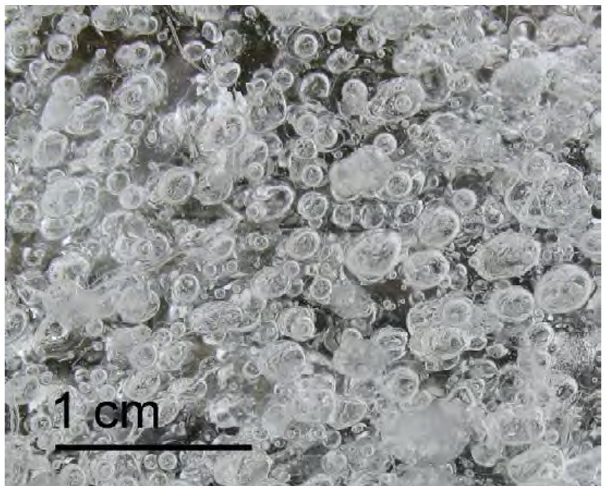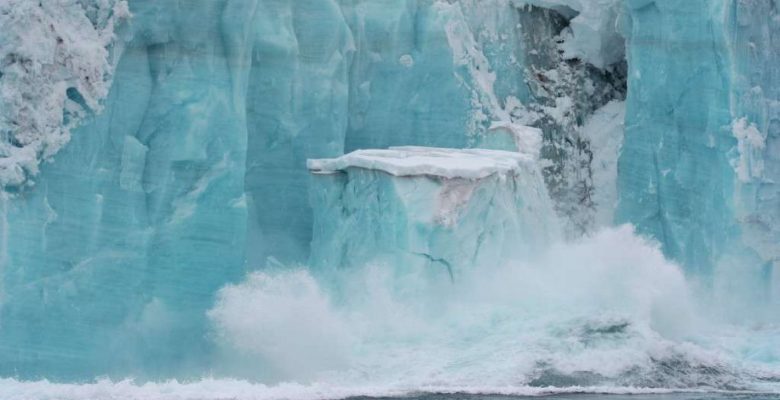By Laurie Henry
Global sea level is rising due to human-induced global warming, recent rates are unprecedented for over 2 centuries. The evolution of glaciers and the production of icebergs by melting ice directly influence this parameter. Monitoring these ice giants is a real challenge for the future estimation of sea level rise, and the implementation of adaptive and anticipatory measures.
Sea level rise is caused primarily by two factors related to global warming: the expansion of seawater as it warms and the amount of water added by the melting of ice caps and glaciers. This last point is responsible for about a third of the global average rise in sea level since 1993.
It is therefore essential to monitor the state of the glaciers and to be able to assess the melting of the ice caps, particularly in Greenland and Antarctica. Indeed, they alone store about two-thirds of all the fresh water on Earth.
The melting of glaciers
The melting of the ice destabilizes the glaciers and in particular at their ends, eaten away by the sea water. The forward movement of a glacier makes the weakened part unstable and the ice breaks. This ice flow adds a significant amount of fresh water to the oceans, raising sea levels.
In glaciology, we speak of “iceberg calving”. This term covers the wide range of processes by which intact chunks of ice are released into the oceans from the ends of glaciers or the margins of ice shelves.
Why a new study method?
Various methods have been developed to measure the ice flow of sea glaciers. Passive glacial seismology, also called cryo-seismology, is probably one of the most widespread and useful tools. Satellite imagery can also allow the comparison of situations before and after a calving episode.
However, they are subject either to the day-night alternation and weather conditions, or they cannot cover a long period of measurements (a satellite passes only once a day above a glacier). In addition, it is extremely dangerous to be near the ice margins for the teams, due to the waves generated by the collapse of a block.
Researchers from the Scripps Institution of Oceanography at the University of California, San Diego, Oskar Glowacki and Grant Deane, describe a new method for measuring mass loss from glaciers due to calving by analyzing underwater acoustic recordings of icebergs when they fall into the ocean.
This acoustic oceanography may offer certain advantages over other methods. Low-cost hydrophones are easily deployed in front of sea glaciers, without risk for the teams, and the acoustic data can be collected continuously for several months, without being influenced by the lack of light or the presence of fog for example.
Two processes and two sounds
In a CNN article, Grant Deane, who has worked in underwater sound for more than two decades, explains that there are two main processes by which glaciers retreat, both of which produce distinct sound.
There’s the “bright, energetic sound of bubbles exploding in the water as the ice melts.” He compares it to fireworks or “sizzling bacon”. And there’s the “deep, ominous rumble” of a calving event, when a block of ice breaks off the end of a glacier, which he says sounds like prolonged thunder. A complex mathematical analysis makes it possible to determine the volume of each icy discharge, according to the sound produced.
The scientists tested the approach by comparing theoretical calculations to records from two sources: blocks of ice of known sizes dropped into a lab pool at Scripps in San Diego, and actual calvings (more than 650).

A section of glacier ice shows the inclusion of many small air bubbles. © G. Deane et al., 2022
The researchers focus on the air bubbles trapped in the ice. They would allow long-term and continuous estimation and monitoring of glacier melting, apart from sudden calving events. G. Deane states: “If we can count the number of bubbles that come out of the ice in a specified unit of time, we can determine the amount of ice that has melted.” This could be essential for estimating how much ice will melt in the future.
Neglected factors in computer models
Projections of sea level rise from ice caps are derived from computer models that simulate ice flow. But without a precise parameterization of iceberg calving, calving rates and therefore the associated sea level rise, the projections of these models still remain imprecise.
Moreover, iceberg calving, in addition to producing sea level rise and surface waves, also produces “internal” underwater tsunami waves, as tall as a house, according to one study (M Meredith et al., 2022) from the British Antarctic Survey, relayed by the European Space Agency (ESA). This phenomenon has gone unnoticed in the understanding of the mixing of ocean waters and in computer models.
Internal tsunami waves are an important factor in the mixing of waters, affecting marine life with the localization of nutrients in the water and the modification of temperatures at different depths. It is therefore the entire marine ecosystem that is upset in the more or less long term by these events.
The data from this new underwater acoustic technique, even if it requires additional research to be deployed on a large scale, is crucial. Glaciers are set to retreat and calve more as climate change continues, directly impacting the health of the oceans and our life on land.


